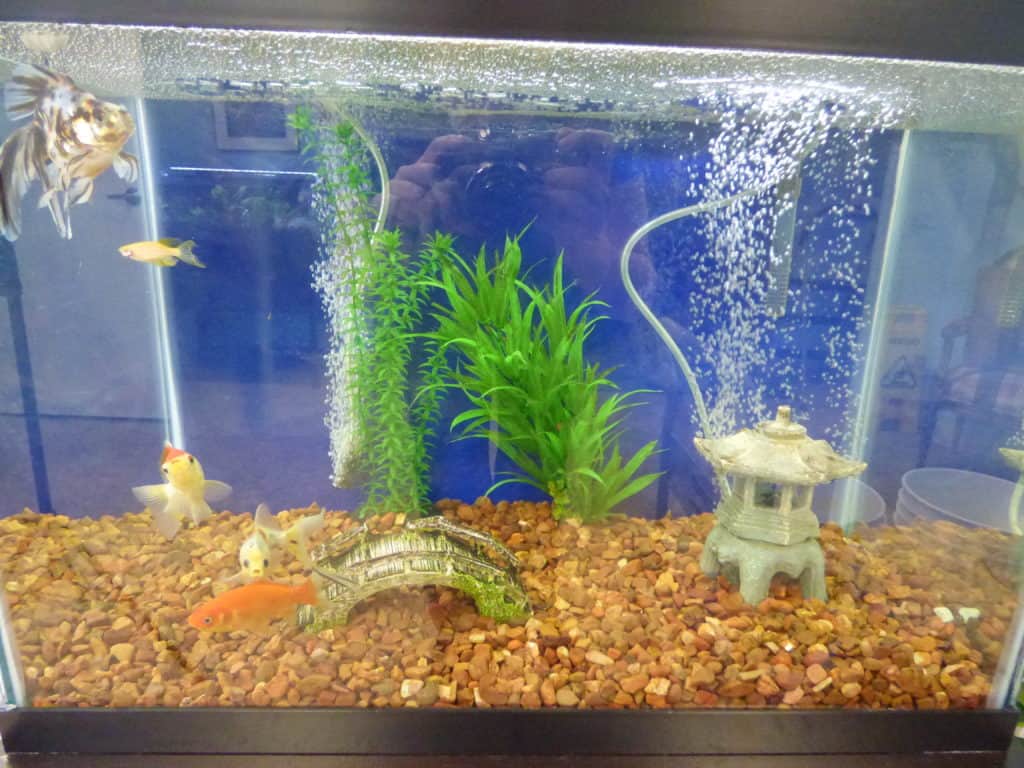What is the answer to “do fish need light?” Fish respond to the same circadian rhythms as most other life on earth. The best lighting for fish tanks utilize this same rhythm. For outdoor systems, this is easy to utilize for your fish, provided you do not blind them overnight with underwater lights. For the lowest stress environment, mimicking the natural outdoor cycle is best for your fish. If you cannot keep up with the seasonal changes, the best lighting for fish tanks and ponds provide a standard period of light and dark.
Fish Vision
Fish eyes are very similar in structure and function to human eyes. The biggest difference is rather than a compressed lens, fish lenses are spherical allowing them to focus better underwater. They possess the same rod and cone cells responsible for black/light and color vision. Depending on a fish’s lifestyle, they may be better at seeing in low light, such as the bottom of a murky lake, or in bright light, like those fish living on sunny coral reefs. Some fish are even able to see ultraviolet and polarized light, something humans are unable to see.
Available Lighting for Fish Tanks
Gone are the days of bulking, burning halogen lights. Some older aquariums still have these giant bulbs, and I know I was singed by many in my past, but this is not the standard anymore. LED lights are now cheap and easy and the standard for most aquariums. They can come in a variety of spectrums and colors to best suit your fish needs. The fancy “night” lights with blue or purple lights may out GMO GloFish friends glow brightly and can have a blacklight-effect on some decor.
If you have an aquarium with lights already built into the hood, you may be able to swap them out if desired. Many hoods have a clear plastic panel that can host a variety of different lights. If you plan on having any corals in your tank, you will need to provide a UV-rich spectrum to promote proper growth of the cohabitating zooxanthellae.
Photoperiod Lighting for Fish Tanks
How long should your lights stay on? The better you are able to match your outdoor light and dark cycles, the better. This will not be the case for coral tanks that are very far from their natural habitat. If you are able to research where your corals are from, matching their wild light cycles will provide the best growth.
Placing an indoor fish tank near a window to match your cycles is not always a great idea. Super sunny days can heat up small volumes of water very quickly and hurt your fish if they are unable to compensate. Natural and UV light can also trigger algae blooms, which are not necessarily a health issue, but an eyesore.
Fancier LED lights come with programming functions, allowing you to set up your tank lighting and have it go on and off without you. Some of these will also have a “sunrise” and “sunset” feature. A simple electronics timer or smart plug will also allow you to set your tank up once and be done for the season. You may need to adjust seasonally as most areas of the world will vary in their light and dark cycles throughout the year.
For most indoor tanks, ones that do not contain corals, a light period of 12-16 hours and dark period of 12-8 hours is a good place to start. Keep in mind that not all fish will like the same light and dark periods. Fish will sleep and having a slow increase in light is better than a sudden switch. Some species will like to “sleep in” and hide out in their caves for awhile until their eyes adjust.


Pingback: Best Lighting for Fish Tanks - PETS YELPS
Pingback: How To Feed And Care for Betta Fish When On Vacation
Pingback: How Do Betta Fish Sleep | Sleeping Fix
Thank you for mentioning the available types of lighting for fish. I am moving to a new area this month. I will also find a good veterinarian service there to help.
Pingback: Do Goldfish Like LED Lights – GlobeAqua
Pingback: Fish Darting Around Tank: 5 Reasons You Need To Know
Pingback: What color are fish most attracted to? - Tourist guide